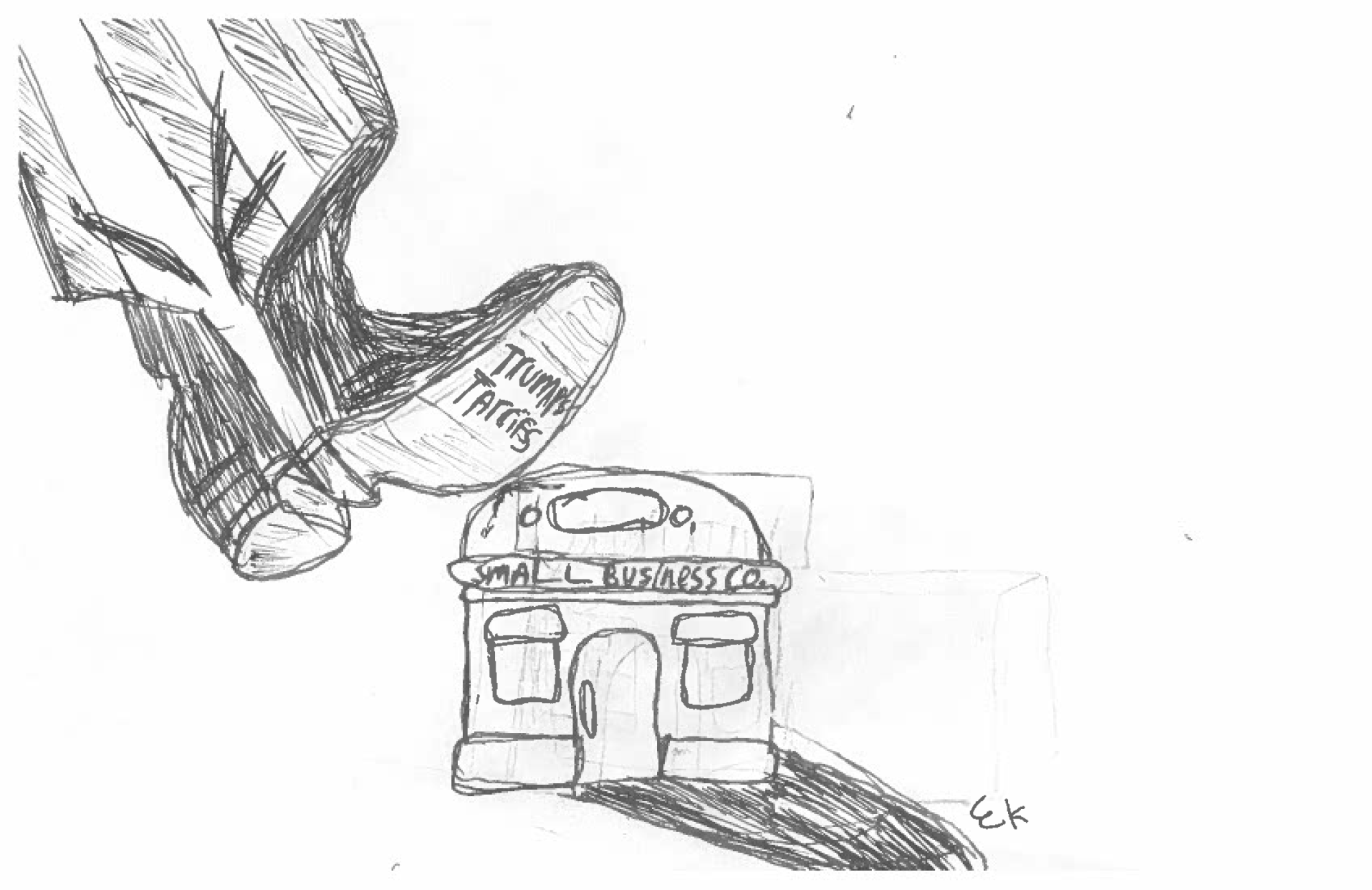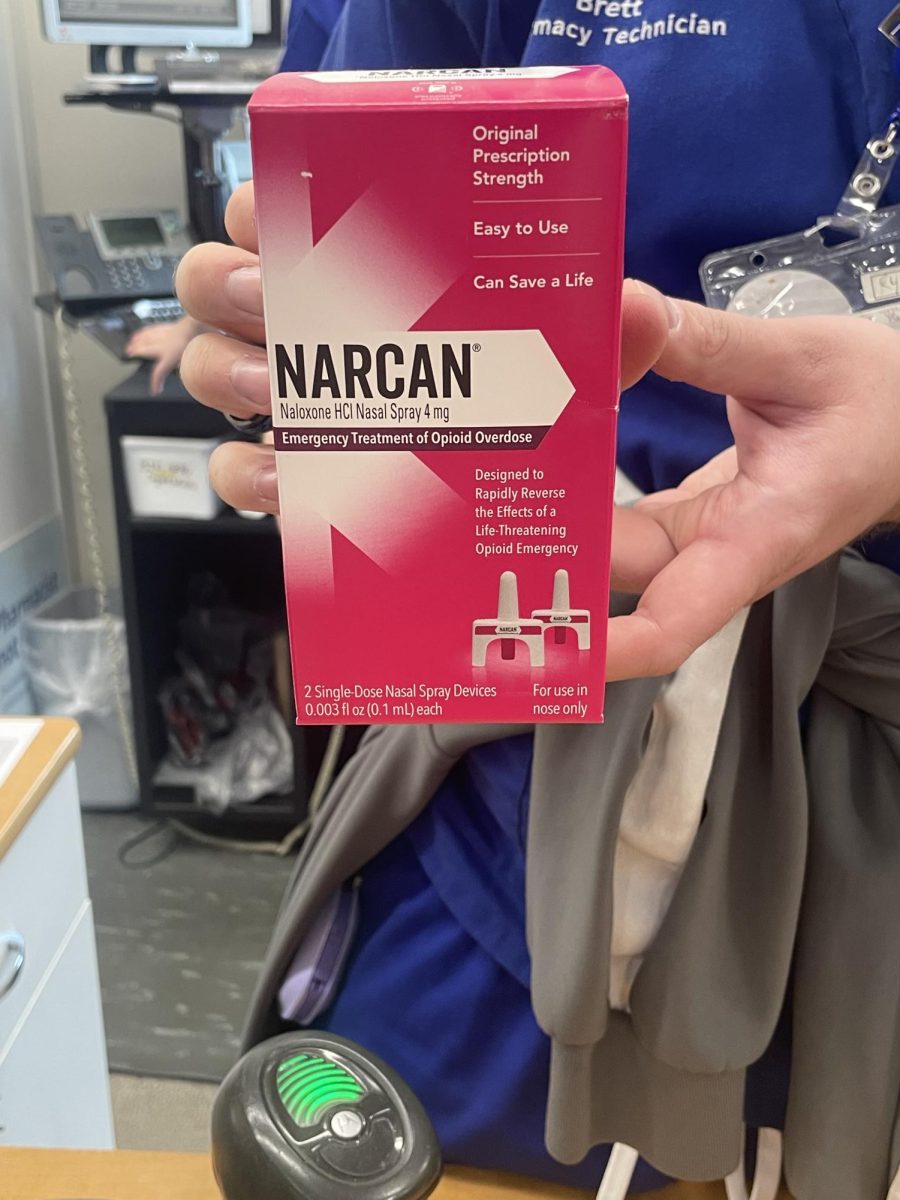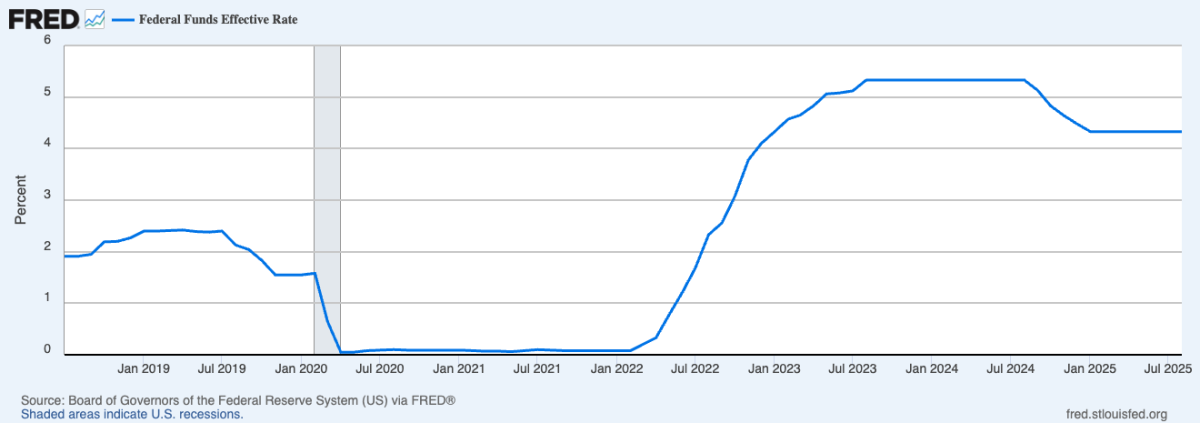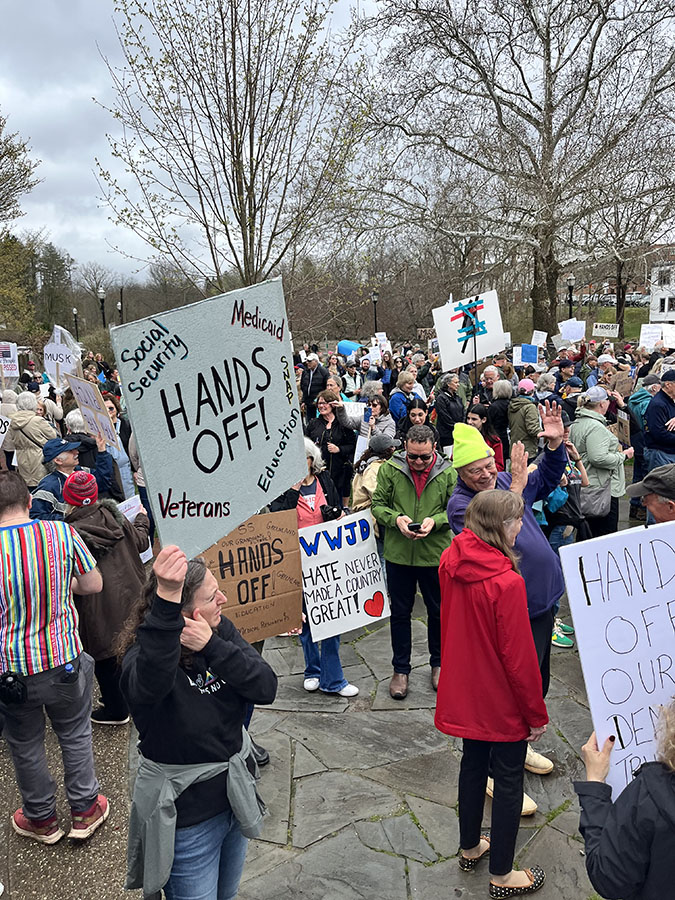Although President Trump announced yesterday that he would put most tariffs on hold for 90 days to allow negotiations, he kept a 10 percent rate on most imported goods and an extreme 125 percent tariff on goods from China.
While many Americans seem to think that this will help American businesses, along with countless other business owners, I have come to experience the adverse effects of these “America first” policies.
I am a young owner of three streetwear brands—one established, two just starting out. I know personally how crucial the cost, quality and time balance is in the production of apparel.
Yet, over the last year, I have depended on manufacturers in China for this balance to work out. Many people seem to think that tariffs are good for American businesses and bad for foreign manufacturers, but it is not that simple. Now, with Trump back in the White House implementing tariffs even higher than in his first term, I, along with countless other American business owners, am under serious threat.
The Reality of Manufacturing Overseas for Small Business Owners
The reason small business owners like me make the choice to manufacture in foreign countries rather than in the U.S. is quite simple: it costs a lot less to make things in China. How much less? Producing clothes in China costs almost exactly half of what it would cost to make the same clothes in the U.S.
Now, I understand that there are all sorts of reasons for keeping manufacturing jobs in the U.S.—And yes, as a small business owner, I know it’s counterintuitive to send jobs overseas.
But the reality is, I can’t afford to pay the kinds of prices that would allow me to keep all the jobs associated with making my products in the U.S.
My margins were already tight, even before the latest tariffs. Every choice I make—be it in pricing, marketing, or the frequency with which I unleash new collections—rests on a precarious financial balance.
Now, with an additional 125% tariff imposed on imports from China, my costs are going up in a big way, slicing right into my profit margins and leaving me with a serious dilemma.
The Ripple Effect of Tariffs on My Business
Trump’s tariffs do not merely raise the taxes on imports. They start a process that makes each part of my business more costly and uncertain. This is what happens, step by step:
Chinese Manufacturers Taking Advantage of the Situation
Some foreign manufacturers exploit the situation by charging more despite the fact that the tariffs don’t directly affect them. Some factories that produce my clothing aren’t affected by the tariffs, but have raised prices and attributed it to the tariffs. They know that American businesses have a limited number of options, so why not squeeze us for every extra dollar? It adds another layer to an already difficult scenario.
When I started my first brand, I had a clear grasp on what it cost to produce my pieces. I could price my collections in such a way that I earned a steady profit. Now, costs are all over the place, and I’m at a loss trying to figure out what to do.
I don’t know if I should raise my prices to protect my margins (which seem to be shrinking) or hold the line and hope I just don’t make a loss. This is a basic problem of business: we need some stability in order to plan with any level of confidence.
This lack of certainty is also what has sent the stock market into freefall this week: business owners and investors alike need to know what moves the government is going to make in order to make investment decisions.
The worldwide supply chain was already under stress from past disruptions, and these tariffs are making it even more fragile. Increased shipping costs, customs delays and the additional fees that goods face when they’re imported into the U.S. are all piling up.
For a clothing brand like mine, everything revolves around timing. If a collection is delayed, it can go from a potential instant sellout to something that just sits there and loses relevance day by day. My products can’t go to ground for months waiting to clear customs. My customers expect scheduled drops.
The Larger Problem: Small Businesses Are Being Squeezed
Politicians find it simple to speak about tariffs in extensive economic terms. Yet, my impression is they don’t quite grasp how these policies directly hit us at the small-business level.
Big brands like Nike and Adidas can lobby the Trump administration for exemptions or can hire expensive lawyers to find loopholes.
But a small business owner like me faces tough choices. Should I shift my manufacturing to another country? That takes time, money and depends on relationships that are not formed in a day. Should I manufacture in the United States? That would more than double my costs and make my brand totally unaffordable to my core customers. Should I increase prices to pass on the cost of tariffs? That could drive away customers who are already sensitive to pricing. Take on the cost? If margins get too tight, that could be the end of my company.
Making the decision to consider raising prices is one of the hardest things I do. I would like to think that if a person is invested in a business, they are also invested in the customers who keep their business running.
We already have marketing, branding, fulfillment and customer retention to troubleshoot without unpredictable government policies disrupting our lives. Every choice we make comes with a significant risk attached, and that’s the problem: We shouldn’t have to make these types of decisions at all.
What Happens Next?
Should Trump keep ramping up these tariffs, the path ahead for small apparel companies like mine will only grow more uncertain. We’ve already seen the prices of our raw materials, like cotton and polyester, shoot up in response to the tariffs already in place. But if our other materials and finished goods all suddenly became subject to tariffs, I honestly don’t know if we could keep going.
Moreover, these policies are creating conditions where the largest corporations are the only ones that can make it. For small businesses, the competition is tougher than ever, and that’s not just because they’re up against some very big players.
It’s also because those big corporations can negotiate deals with manufacturers that small businesses just can’t match. They can absorb costs that would put a small business under.
And when you’re talking about market conditions that can change overnight, those large firms have the resources to shift production to where it needs to go far better than any small business. What we’re really talking about here, not just as a potential future outcome but as something that is currently happening, is the erosion of independent business.
The Bigger Picture: This Isn’t Just About Me
I’m not merely concerned about my own company—I’m concerned about what this spells out for the entire sector. The apparel sector has always prospered on inventiveness and disruptions in the marketplace by independent brands. If tariffs and economic policies conspire to make it hard for nascent brands to stay afloat, then the whole sector loses the diversification and the inventive quality that make fashion what it is.
Disruption in the industry does not just hurt fashion brands. It hurts retailers, salespeople and consumers. It impacts sales at malls like Beachwood place.
The backbone of the economy are small business owners like me. We take risks and create jobs. We are the ones who bring new ideas to market. But when the government pushes policies like these, it makes it feel like the government is pushing back against us instead of helping us.
A Call for Change
If there’s one thing I hope people take away from this, it’s that tariffs don’t just hurt China—they hurt American business owners, workers and consumers.
The goal of these policies may be to shift trade in America’s favor, but in reality, they are making it harder for small businesses to succeed. We need policies that support independent brands, not ones that push us out of the market.
For now, I will keep doing everything I can to adapt, but it shouldn’t be this hard. Small business owners deserve better. We need stability. We need fair trade policies. And we need politicians that understand how decisions made in Washington affect their constituents, the people who are actually trying to build something.
Until then, we will continue to struggle, all because of policies that were meant to protect American businesses but are, in reality, hurting the ones that need the most support.













